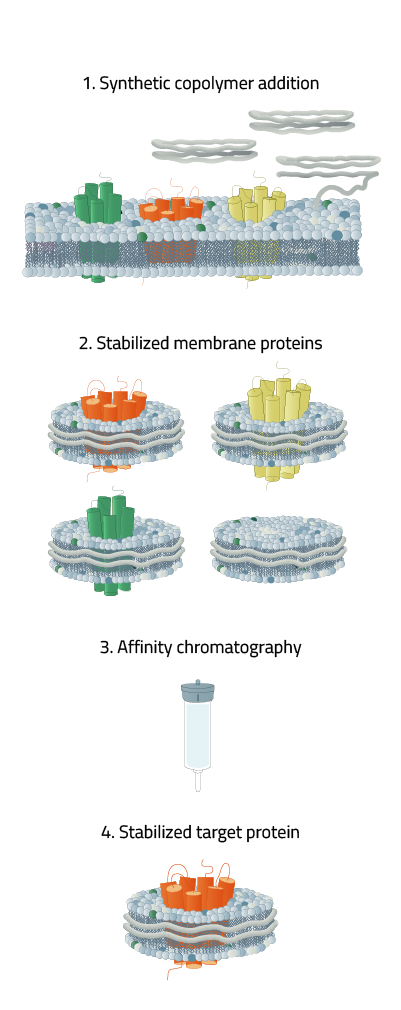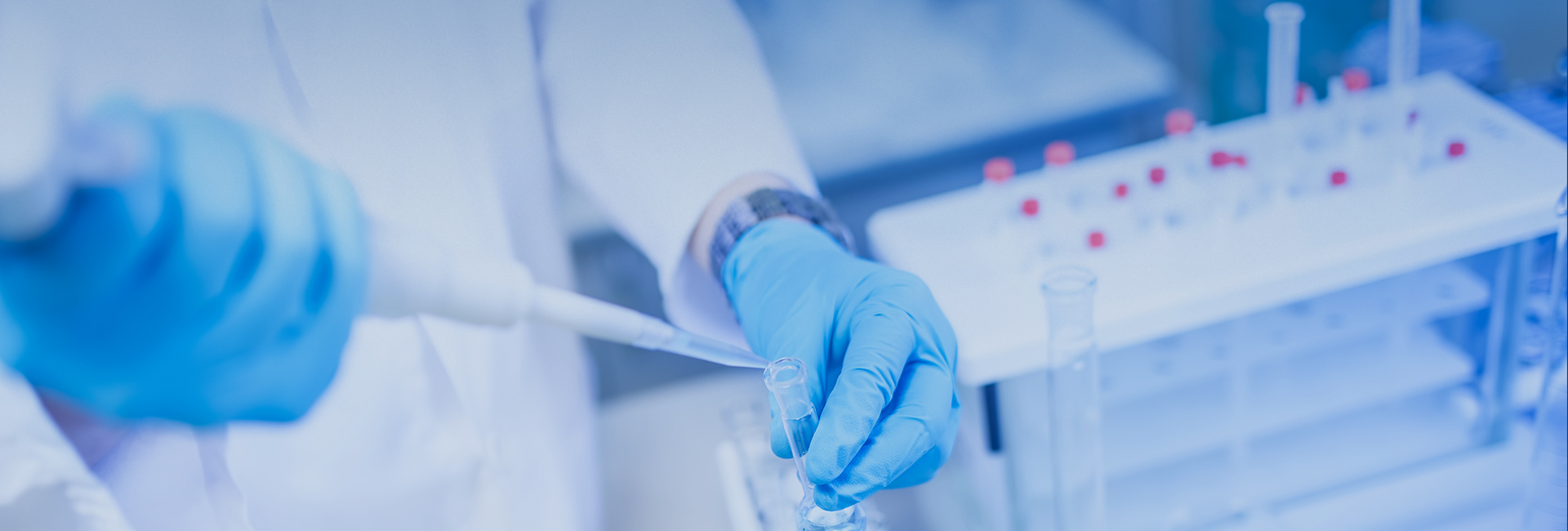What Are Nanodiscs - Synthetic Polymers?
Synthetic nanodiscs are small disc-shaped structures, composed of cell membrane phospholipids that are held together by a synthetic polymer ring.

Figure 1: Depiction of a synthetic nanodisc
They provide a mobile, near identical copy, of the native membrane protein environment in the cell membrane. Thus, they circumvent the problems of solubilization detergents and allow us to stabilize and isolate membrane proteins in their active state for further scientific research.
There are several different polymers that can be used to create synthetic nanodiscs. Each with its own advantages and disadvantages

Cell membranes provide the environment for one of our most important protein groups: the membrane proteome. Being divided into peripheral and integral proteins, they both share a certain hydrophobicity of some sort, impeding solubilization under normal conditions.
The problem is that when these hydrophobic regions come into contact with water or another hydrophilic medium, the 3D structure of the membrane protein collapses and consequently loses its functionality.
To avoid this from happening, protein scientists have traditionally used detergents to cover up those vulnerable parts of the membrane protein. But detergent based approaches come with their own sets of problems, like time-consuming screening processes or 3D structure interferences.
Synthetic polymers however are able to form a polymer chain out of their monomers to insert into a cell membrane surrounding your desired membrane protein (see Fig. 2, red thread at the top). Like a cookie cutter, the membrane protein is dissolved from the membrane and the polymer keeps the membrane protein stable in the newly formed nanodisc.
Consequential affinity chromatography steps allow for precise isolation of your stabilized target protein and further scientific analysis.

Figure 2: The creation process of a synthetic nanodisc from a native cell membrane including membrane proteins. Normally this step is followed by affinity chromatography.













 Home
Home Facebook
Facebook WeChat
WeChat Twiitter
Twiitter
